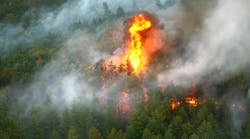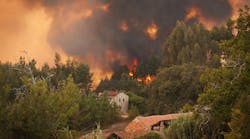It’s that time of the year when I like to look back, take stock, to help energize and provide focus for the future. But before I do, I want to return to the theme I’ve been pressing for the last couple of months: We need to gain acceptance of the risks associated with providing electrical service being not solely a utility issue, but a societal issue.
I stated that as a starting point you need to have convincing data. The next step of course, is to put that data into simple-to-understand-and-communicate talking points that everyone in the utility organization can readily present whenever and wherever the opportunity presents itself. And I came across a perfect example in a dailycal.org article written by Melissa Wen. She was talking to Tamar Sarkissian of PG&E about tree-caused outages in the East Bay area due to a 45 mph wind storm. Sarkissian told her 13 percent of PG&E outages are caused by trees and more than 90 percent of those are due to healthy trees. That’s beautiful messaging. It’s only 13%. Do you want us to take away your healthy trees to improve on that?
Looking back over the year I would say the major theme was data. In some cases, better data, and if that requires some research funding then so be it. Isn’t the cost justified by the prominence VM has in the operating budget? In other cases, it was to recognize and leverage the wealth of data utilities already have.
In the series Why Asset Management Leads to More Tree-caused Interruptions I demonstrated exactly that. The utility tracked work performed and that data included the nature of the work, in this case pruning of crown or lateral growth, information on the type of trees pruned, and the clearance provided on completing the work. The utility also had tree regrowth studies categorized under crown or lateral regrowth and whether the tree species were deciduous or coniferous. There was no need for further, independent field work. I believe many utilities would have similar data on hand. It’s a matter of leveraging existing data and consequently, is not expensive nor a major undertaking. Since the term of the maintenance cycle is a major topic of discussion at utilities, the graphs that were produced in combining these data sources are a significant step toward a better understanding of the relationship between maintenance cycles and reliability. They show how the frequency distribution can be used to deduce the optimal maintenance cycle and the reliability implications while the cumulative graph illustrates why using increasing tree-related outage statistics as a primary driver for maintenance is ineffective from a reliability and risk management perspective, and is unnecessarily costly.
I hope you have found the editorials informative and stimulating. Should you have any VM issues you would like to see covered there is a comment box below the articles on the web page or alternately, you can contact me directly at [email protected]. Your feedback and suggestions for topics are always appreciated.
In the spirit of Christmas may you be renewed; to enter the New Year with optimism and hope.


